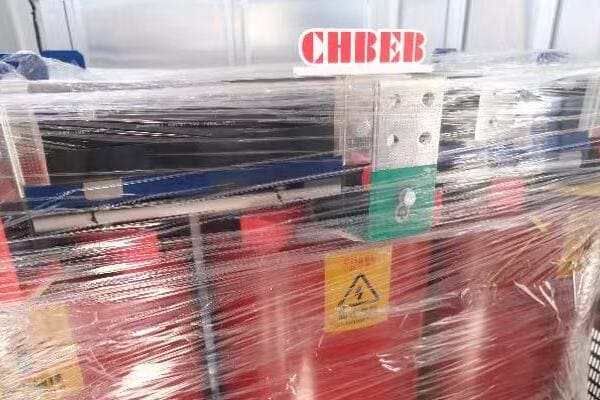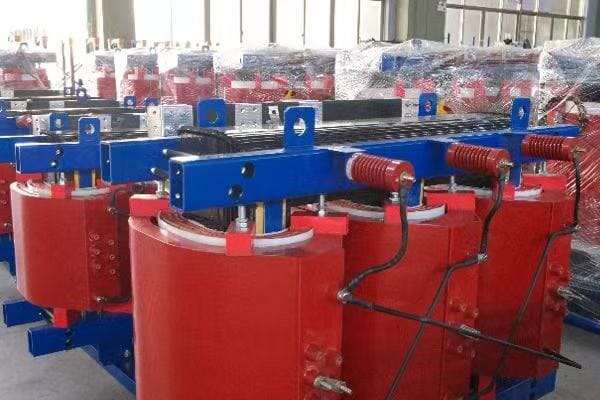Top Pad Mounted Transformer Manufacturers: Global and China-Based Suppliers Compared?
Are you torn between choosing a global brand or a Chinese manufacturer for your pad mounted transformer needs? You’re not alone. This decision can make or break your project’s success and budget.
Top pad mounted transformer manufacturers include global giants like ABB, Siemens, and GE, alongside Chinese powerhouses such as TBEA and CHINT. Each offers unique strengths in quality, cost, innovation, market presence, compliance, and after-sales support.
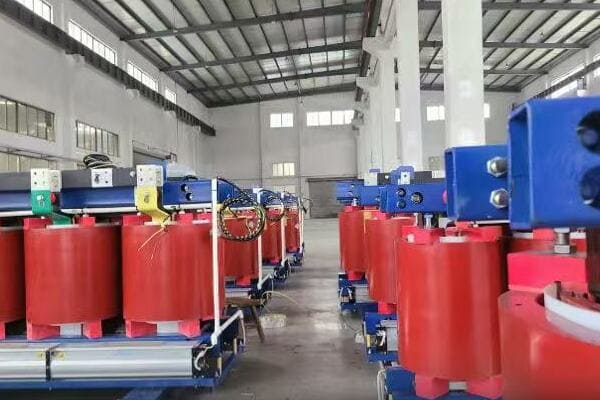
I’ve worked with both global and Chinese manufacturers for years. Trust me, the landscape is more complex than you might think. Let’s dive into the key factors you need to consider when choosing your pad mounted transformer supplier.
Quality vs. Cost: Analyzing the Trade-offs Between Global Brands and Chinese Manufacturers?
Are you struggling to balance quality and cost in your transformer purchase? It’s a common dilemma. Global brands often tout superior quality, while Chinese manufacturers offer attractive prices. But is this perception always accurate?
Global brands typically offer higher quality but at premium prices, while Chinese manufacturers provide cost-effective solutions with improving quality. The gap is narrowing, with top Chinese firms now competing on quality while maintaining a price advantage.
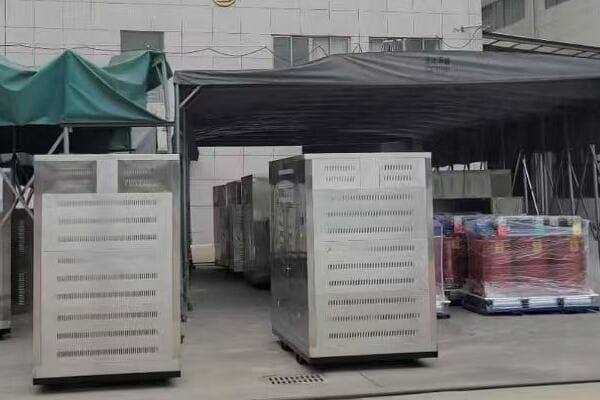
I’ve seen this quality-cost dynamic evolve over the years. Let me break it down for you:
Global Brands: The Quality Leaders
Strengths:
- Established Reputation: Companies like ABB and Siemens have decades of global trust.
- Cutting-Edge Technology: Often at the forefront of innovation.
- Rigorous Quality Control: Stringent processes ensure consistent quality.
Weaknesses:
- Higher Prices: You’re paying for the brand name and advanced features.
- Less Flexibility: May be slower to adapt to specific market needs.
Chinese Manufacturers: The Cost-Effective Challengers
Strengths:
- Competitive Pricing: Often 20-30% cheaper than global brands.
- Improving Quality: Rapid advancements in recent years.
- Production Capacity: Can handle large orders quickly.
Weaknesses:
- Variable Quality: Top firms are excellent, but there’s more variation across the industry.
- Perception Issues: Some still face skepticism in international markets.
Quality Metrics Comparison
I’ve compiled this table based on my experiences and industry data:
| Metric | Global Brands | Top Chinese Manufacturers | Average Chinese Manufacturers |
|---|---|---|---|
| Failure Rate | <0.5% | 0.5-1% | 1-2% |
| Efficiency | 98-99% | 97-98% | 96-97% |
| Lifespan | 30-40 years | 25-35 years | 20-30 years |
| Price (relative) | 100% | 70-80% | 60-70% |
Real-World Example
I recently worked on a project where we compared transformers from a top global brand and a leading Chinese manufacturer:
-
Global Brand Transformer:
- Price: $50,000
- Efficiency: 98.8%
- Estimated Lifespan: 35 years
-
Chinese Manufacturer Transformer:
- Price: $38,000
- Efficiency: 98.2%
- Estimated Lifespan: 30 years
The Chinese option was 24% cheaper but only marginally less efficient. For many of my clients, this represents an attractive value proposition.
Factors to Consider
When making your decision, think about:
- Project Requirements: High-critical applications might justify premium prices.
- Budget Constraints: Sometimes, a good-enough solution is the best choice.
- Long-Term Costs: Factor in efficiency and lifespan, not just upfront price.
- Local Support: Ensure the manufacturer has a strong presence in your region.
The Changing Landscape
The quality gap is narrowing. I’ve noticed:
- Chinese Investments in R&D: Many are now producing transformers that rival global brands.
- Global Brands Adapting: Some are creating more cost-effective lines to compete.
- Collaborations: Joint ventures between Chinese and global firms are becoming common.
My Advice
- Don’t assume quality based on origin alone. Evaluate each manufacturer individually.
- Consider mid-tier global brands or top-tier Chinese manufacturers for a balance of quality and cost.
- Always request sample testing and certifications, regardless of the manufacturer’s origin.
- Look at total cost of ownership, not just the initial price tag.
Remember, the best choice depends on your specific needs and constraints. Sometimes, the premium quality of a global brand is worth the extra cost. Other times, a Chinese manufacturer can offer the perfect balance of quality and affordability.
Technological Innovation: Comparing R&D Capabilities of International and Chinese Transformer Producers?
Are you wondering who’s really leading the pack in transformer technology? It’s a common question in our fast-evolving industry. Global brands have long been seen as innovation leaders, but Chinese manufacturers are catching up fast. So, who’s really pushing the boundaries of transformer tech?
Global manufacturers like ABB and Siemens lead in overall R&D investment and patented innovations. However, Chinese firms such as TBEA and CHINT are rapidly closing the gap, particularly in areas like smart grid technology and energy efficiency.
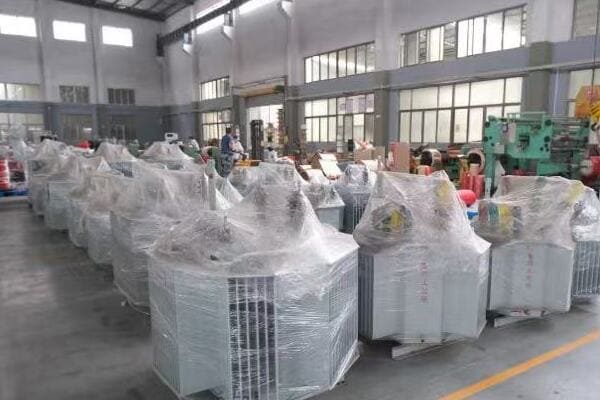
I’ve been tracking technological developments in the transformer industry for years. The landscape is changing faster than many realize. Let’s dive into the details:
Global Manufacturers: The Traditional Innovators
Strengths:
- Massive R&D Budgets: Companies like ABB spend billions annually on research.
- Established Research Centers: Global networks of advanced labs and testing facilities.
- Collaboration with Universities: Strong ties with top academic institutions worldwide.
Focus Areas:
- Smart Grid Integration
- High-Voltage DC Transmission
- Eco-friendly Insulation Materials
Chinese Manufacturers: The Fast-Rising Challengers
Strengths:
- Government Support: Significant backing for technological advancement.
- Rapid Prototyping: Faster from concept to production.
- Domestic Market Advantage: Huge local market for testing innovations.
Focus Areas:
- Cost-Effective Smart Transformers
- Renewable Energy Integration
- Compact Urban Substation Solutions
Innovation Metrics Comparison
Here’s a table I’ve put together based on recent industry data and my observations:
| Metric | Global Leaders | Top Chinese Manufacturers |
|---|---|---|
| Annual R&D Investment | $1-2 billion | $200-500 million |
| Patents Filed (Annual) | 500-1000 | 200-500 |
| New Product Introductions | 5-10 per year | 10-20 per year |
| Time from R&D to Market | 2-3 years | 1-2 years |
Key Innovation Areas
-
Smart Grid Technology
- Global Leaders: Advanced AI integration, predictive maintenance
- Chinese Manufacturers: Cost-effective smart sensors, rapid deployment solutions
-
Efficiency Improvements
- Global Leaders: Ultra-low loss core materials, advanced cooling systems
- Chinese Manufacturers: High-efficiency designs at competitive prices
-
Renewable Energy Integration
- Global Leaders: High-capacity offshore wind transformer solutions
- Chinese Manufacturers: Solar farm optimization, distributed energy systems
-
Urban Solutions
- Global Leaders: Ultra-quiet designs, advanced fire safety features
- Chinese Manufacturers: Compact designs for high-density urban areas
Real-World Innovation Example
I recently visited research facilities of both a global leader and a top Chinese manufacturer. Here’s what I saw:
-
Global Manufacturer Lab:
- Focus: AI-driven transformer health monitoring system
- Investment: $50 million over 3 years
- Result: 15% improvement in predicting transformer failures
-
Chinese Manufacturer Lab:
- Focus: Rapid deployment smart substation solution
- Investment: $20 million over 2 years
- Result: 40% reduction in substation setup time
Both were impressive in their own right, showcasing different approaches to innovation.
The Changing Innovation Landscape
I’ve noticed some interesting trends:
- Collaborative Innovation: Increasing partnerships between global and Chinese firms
- Specialization: Some Chinese firms are becoming global leaders in niche technologies
- Reverse Innovation: Cost-effective solutions developed in China being adopted globally
Factors Influencing Innovation Capabilities
- Regulatory Environment: Stricter efficiency standards driving innovation
- Market Demands: Urbanization and renewable energy shaping research priorities
- Talent Pool: Competition for top engineers influencing R&D capabilities
My Advice for Buyers
- Look beyond brand names. Evaluate specific technologies that meet your needs.
- Consider the long-term innovation roadmap of manufacturers.
- Don’t overlook niche innovations from smaller, specialized manufacturers.
- Assess how well innovations translate to real-world performance and cost savings.
The innovation race in transformer technology is more complex than ever. While global brands still lead in many areas, Chinese manufacturers are innovating rapidly, often in ways that directly address market needs. The best choice depends on your specific requirements and which innovations align best with your long-term goals.
Market Presence and Distribution: Global Reach of Top Pad Mounted Transformer Suppliers?
Are you concerned about the availability and support for your pad mounted transformers across different regions? It’s a valid worry. The global reach of a manufacturer can significantly impact your project’s success, especially for international operations.
Global brands like ABB and Siemens offer extensive worldwide networks, while top Chinese manufacturers like TBEA and CHINT are rapidly expanding their international presence. The choice impacts product availability, local support, and delivery times.
I’ve worked with clients across the globe, and I’ve seen firsthand how crucial a manufacturer’s market presence can be. Let’s break down what you need to know:
Global Manufacturers: The Established Networks
Strengths:
- Worldwide Presence: Offices and support in almost every country
- Established Supply Chains: Efficient logistics across continents
- Local Customization: Ability to adapt products to regional requirements
Challenges:
- Higher Costs: Maintaining global networks reflects in product prices
- Bureaucracy: Sometimes slower to respond to local market changes
Chinese Manufacturers: The Expanding Challengers
Strengths:
- Rapid International Expansion: Aggressive growth in emerging markets
- Cost-Effective Distribution: Leveraging efficient supply chains
- Flexibility: Often more willing to adapt to specific market needs
Challenges:
- Varying Presence: Strong in some regions, still developing in others
- Perception Issues: Overcoming historical quality concerns in some markets
Market Presence Comparison
Here’s a table I’ve compiled based on my industry knowledge and recent data:
| Region | Global Brands Presence | Chinese Manufacturers Presence |
|---|---|---|
| North America | Very Strong (90%+ market coverage) | Growing (30-40% market coverage) |
| Europe | Very Strong (90%+ market coverage) | Moderate (40-50% market coverage) |
| Asia | Strong (80-90% market coverage) | Very Strong (80%+ market coverage) |
| Africa | Strong (70-80% market coverage) | Strong (60-70% market coverage) |
| South America | Strong (70-80% market coverage) | Growing (40-50% market coverage) |
| Middle East | Very Strong (80%+ market coverage) | Strong (60-70% market coverage) |
Distribution and Support Networks
-
Global Manufacturers:
- Extensive networks of local offices and authorized distributors
- Well-established relationships with major utilities and industries
- Standardized global support systems
-
Chinese Manufacturers:
- Rapidly expanding network of international offices
- Strong partnerships with local distributors in key markets
- Increasing presence at international trade shows and industry events
Real-World Distribution Scenario
I recently helped a client with a multi-country project in Southeast Asia. Here’s what we experienced:
-
Global Brand Option:
- Presence: Offices in all target countries
- Delivery Time: 8-10 weeks
- Local Support: Comprehensive, with in-country technicians
-
Chinese Manufacturer Option:
- Presence: Direct offices in 2 out of 5 countries, partners in others
- Delivery Time: 6-8 weeks
- Local Support: Available through partners, direct support for major issues
The Chinese option offered faster delivery, but the global brand provided more comprehensive local support.
Factors to Consider
When evaluating market presence and distribution:
- Local Regulations: Some regions have preferences or requirements for local content
- After-Sales Support: Consider the availability of spare parts and technical assistance
- Delivery Times: Especially crucial for time-sensitive projects
- Cultural Factors: Some markets may have strong preferences for certain brands
Emerging Trends
I’ve noticed some interesting developments:
- Chinese Manufacturers’ Global Acquisitions: Buying local companies to expand presence
- Global Brands’ Localization: Increasing local production in key markets
- E-commerce Platforms: Both global and Chinese firms expanding online sales and support
My Advice
- Assess your global footprint and future expansion plans
- Consider the criticality of local support for your operations
- Don’t assume global brands are always better positioned – check specific regional presence
- For multi-country projects, consider mixing suppliers to optimize coverage
Remember, the best choice depends on your specific global footprint and support needs. Sometimes, a combination of global and Chinese suppliers can provide the optimal solution for complex, multi-region projects.
Compliance and Certification: Navigating International Standards with Global and Chinese Manufacturers?
Are you worried about ensuring your pad mounted transformers meet all necessary international standards? It’s a common concern, especially when comparing global brands with Chinese manufacturers. But how do they really stack up in terms of compliance and certification?
Global manufacturers typically have a long history of meeting international standards, while top Chinese firms have rapidly improved their compliance capabilities. Both can now offer products certified to major international standards, though the process and depth of experience may differ.
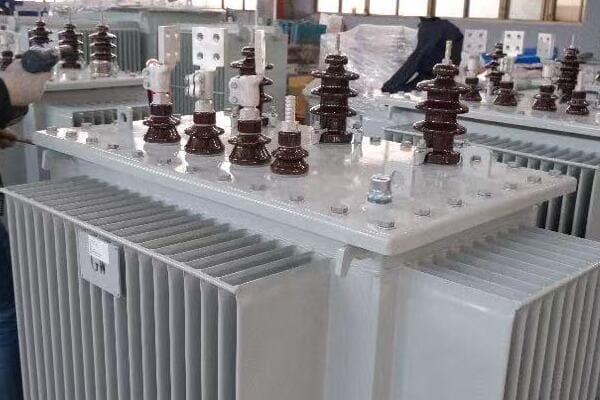
I’ve guided many clients through the compliance maze, and I’ve seen significant changes in recent years. Let’s unpack the key aspects of compliance and certification:
Global Manufacturers: The Compliance Veterans
Strengths:
- Long-standing relationships with international certification bodies
- Extensive experience with a wide range of global standards
- Often involved in developing new standards
Challenges:
- Sometimes slower to adapt to rapidly changing local standards in emerging markets
- Higher costs associated with maintaining multiple certifications
Chinese Manufacturers: The Quick Adapters
Strengths:
- Rapidly improving compliance capabilities
- Often more agile in adapting to new or changing standards
- Competitive pricing on certification processes
Challenges:
- Less historical data on long-term compliance in some markets
- Overcoming perceptions of lower quality or compliance standards
Key International Standards
Here’s a table of major standards and how global and Chinese manufacturers typically comply:
| Standard | Global Manufacturers | Top Chinese Manufacturers |
|---|---|---|
| IEEE C57.12.00 | Fully compliant, often exceed | Fully compliant |
| IEC 60076 | Fully compliant, often involved in standard development | Fully compliant |
| ANSI | Long history of compliance | Increasingly compliant |
| EU Ecodesign | Fully compliant, often exceed | Compliant, rapidly improving |
| Regional Standards (e.g., GOST, CCC) | Variable, often through local partnerships | Strong in specific regions |
Certification Process Comparison
-
Global Manufacturers:
- In-house testing facilities accredited by international bodies
- Established processes for multi-standard certification
- Often have products pre-certified for major global markets
-
Top Chinese Manufacturers:
- Increasing number of accredited in-house testing facilities
- Growing expertise in navigating international certifications
- Often more flexible in adapting to specific national standards
Real-World Compliance Scenario
I recently worked on a project requiring transformers for both the US and European markets. Here’s what we found:
-
Global Manufacturer:
- Offered products pre-certified for both markets
- Provided comprehensive compliance documentation
- Higher cost, but streamlined certification process
-
Chinese Manufacturer:
- Required additional certification for EU market
- Worked quickly to obtain necessary certifications
- Lower cost, but required more involvement in certification process
Both ultimately met all requirements, but the process and timeline differed.
Navigating Compliance Challenges
Documentation and Traceability
-
Global Manufacturers:
- Typically provide extensive, well-organized documentation
- Long-term traceability of components and processes
-
Chinese Manufacturers:
- Improving rapidly in documentation quality
- Some may require more detailed checks on component traceability
Adapting to New Standards
-
Global Manufacturers:
- Often involved in standard development, well-prepared for changes
- May be slower to implement due to established processes
-
Chinese Manufacturers:
- Typically quick to adapt to new standards
- May sometimes interpret standards differently, requiring clarification
Emerging Trends in Compliance
I’ve noticed some interesting developments:
- Harmonization of Standards: Increasing alignment between international standards
- Digital Compliance Tools: Both global and Chinese firms adopting advanced tracking systems
- Sustainability Certifications: Growing importance of environmental and ethical certifications
My Advice for Navigating Compliance
- Clearly define your markets and required standards early in the procurement process
- Don’t assume compliance based on manufacturer origin – always verify certifications
- Consider the total cost of compliance, including potential recertification or adaptation costs
- For complex multi-national projects, consider manufacturers with experience in all relevant markets
Remember, compliance is not just about meeting standards on paper. It’s about ensuring consistent quality and safety in real-world applications. Both global and top Chinese manufacturers can meet international standards, but the path to compliance and the depth of experience may differ.
After-Sales Support and Warranty: Evaluating Long-Term Value Propositions of Different Suppliers?
Are you concerned about what happens after you’ve installed your pad mounted transformer? You should be. After-sales support and warranty can make or break your long-term satisfaction and total cost of ownership. But how do global brands and Chinese manufacturers compare in this crucial area?
Global manufacturers typically offer comprehensive, worldwide after-sales support and longer warranty periods. Top Chinese manufacturers are rapidly improving their support networks and warranty terms, often offering competitive packages, especially in regions where they have a strong presence.
I’ve dealt with after-sales issues for clients around the world, and I’ve seen significant changes in recent years. Let’s break down what you need to know:
Global Manufacturers: The Established Support Networks
Strengths:
- Worldwide support infrastructure
- Extensive spare parts availability
- Typically longer warranty periods
Challenges:
- Higher costs for extended support packages
- Sometimes slower response in remote locations
Chinese Manufacturers: The Emerging Support Systems
Strengths:
- Rapidly expanding global support networks
- Often more flexible in customizing support packages
- Competitive pricing on extended warranties
Challenges:
- Variable support quality across different regions
- Potentially longer lead times for specialized parts in some areas
Warranty and Support Comparison
Here’s a table I’ve compiled based on industry averages and my experience:
| Aspect | Global Manufacturers | Top Chinese Manufacturers |
|---|---|---|
| Standard Warranty | 3-5 years | 2-3 years |
| Extended Warranty Options | Up to 10-15 years | Up to 5-10 years |
| 24/7 Support Availability | Globally available | Available in major markets |
| Spare Parts Availability | Extensive global network | Improving, strong in key markets |
| On-Site Service Response Time | 24-48 hours (most locations) | 24-72 hours (varies by region) |
| Remote Diagnostics | Advanced, widely available | Increasingly available, especially on newer models |
Key Aspects of After-Sales Support
-
Technical Support
- Global Manufacturers: Typically offer multilingual, 24/7 global support
- Chinese Manufacturers: Expanding 24/7 support, strong in regions with significant presence
-
Spare Parts Availability
- Global Manufacturers: Extensive global inventories, fast shipping worldwide
- Chinese Manufacturers: Improving global inventory, very strong in Asia and expanding elsewhere
-
Training and Documentation
- Global Manufacturers: Comprehensive training programs, extensive documentation
- Chinese Manufacturers: Increasing focus on training, documentation improving in quality and availability
Real-World Support Scenario
I recently helped a client resolve issues with transformers from both a global brand and a Chinese manufacturer. Here’s what we experienced:
-
Global Brand:
- Issue: Faulty cooling system
- Response Time: 24 hours
- Resolution: On-site repair within 3 days, all parts available
- Cost: Covered under warranty
-
Chinese Manufacturer:
- Issue: Control panel malfunction
- Response Time: 36 hours
- Resolution: Remote diagnosis, replacement part shipped within a week
- Cost: Labor covered, part at a discounted rate (just out of warranty)
Both issues were resolved, but the process and timeline differed.
Factors to Consider in After-Sales Support
- Geographic Location: Support quality can vary based on your location
- Criticality of Application: Some suppliers offer premium support for critical installations
- In-House Expertise: Your team’s capability can influence the level of support needed
- Long-Term Availability: Consider the manufacturer’s commitment to long-term support and spare parts availability
Emerging Trends in After-Sales Support
I’ve noticed some interesting developments:
- Predictive Maintenance: Both global and Chinese firms offering AI-driven predictive services
- Augmented Reality Support: Remote assistance using AR technology for faster problem-solving
- Online Platforms: Increasing use of customer portals for support, documentation, and parts ordering
My Advice for Evaluating After-Sales Support
- Look beyond the warranty period – consider the total lifecycle of the transformer
- Assess the manufacturer’s local presence and support infrastructure in your specific locations
- Consider the cost and availability of extended warranty and support packages
- Check user reviews and industry reputation for after-sales support
- For critical applications, consider support quality as important as initial product quality
Remember, the best after-sales support is the one you never need to use. However, when issues do arise, having a reliable, responsive support system can save you time, money, and a lot of headaches. Both global and top Chinese manufacturers can offer good support, but the nature and extent of that support can vary significantly.
Conclusion
Choosing between global and Chinese pad mounted transformer manufacturers involves weighing factors like quality, cost, innovation, market presence, compliance, and after-sales support. Each option offers unique strengths, and the best choice depends on your specific needs and priorities.
Free CHBEB Transformer Catalog Download
Get the full range of CHBEB transformers in one catalog.
Includes oil-immersed, dry-type, pad-mounted, and custom solutions.
Quick Message
Request A free quote
We'd like to work with you
- +86 15558785111
- [email protected]
- +86 15558785111
What We Do
CHINA BEI ER BIAN (CHBEB) GROUP, with 218 million in registered capital, originated from Beijing Beierbian Transformer Group. Headquartered in Beijing for R&D, it operates major production bases in Nanjing and Yueqing, producing high-quality products.
Latest Product
address
BeiJing
No 3,RongJing East Road,BeiJing Economic Technological Development Area,BeiJing,China
JiangSu
No 7️Xiangfeng Road,Jiangning,NanJing,JiangSu,China
WenZhou
No.211, Wei 16 Road, Industrial Zone, Yueqing, Wenzhou, Zhejiang, China.
XiangYang Industrial Zone ,YueQing,WenZhou,ZheJiang,China
contact us
- [email protected]
- +86 13057780111
- +86 13057780111
- +86 15558785111
Copyright © Bei Er Bian Group

